Published Mar 9, 2023
The Evolution of 'The Devil in the Dark'
In honor of the anniversary of its first air date, we're taking a look back at this classic episode.
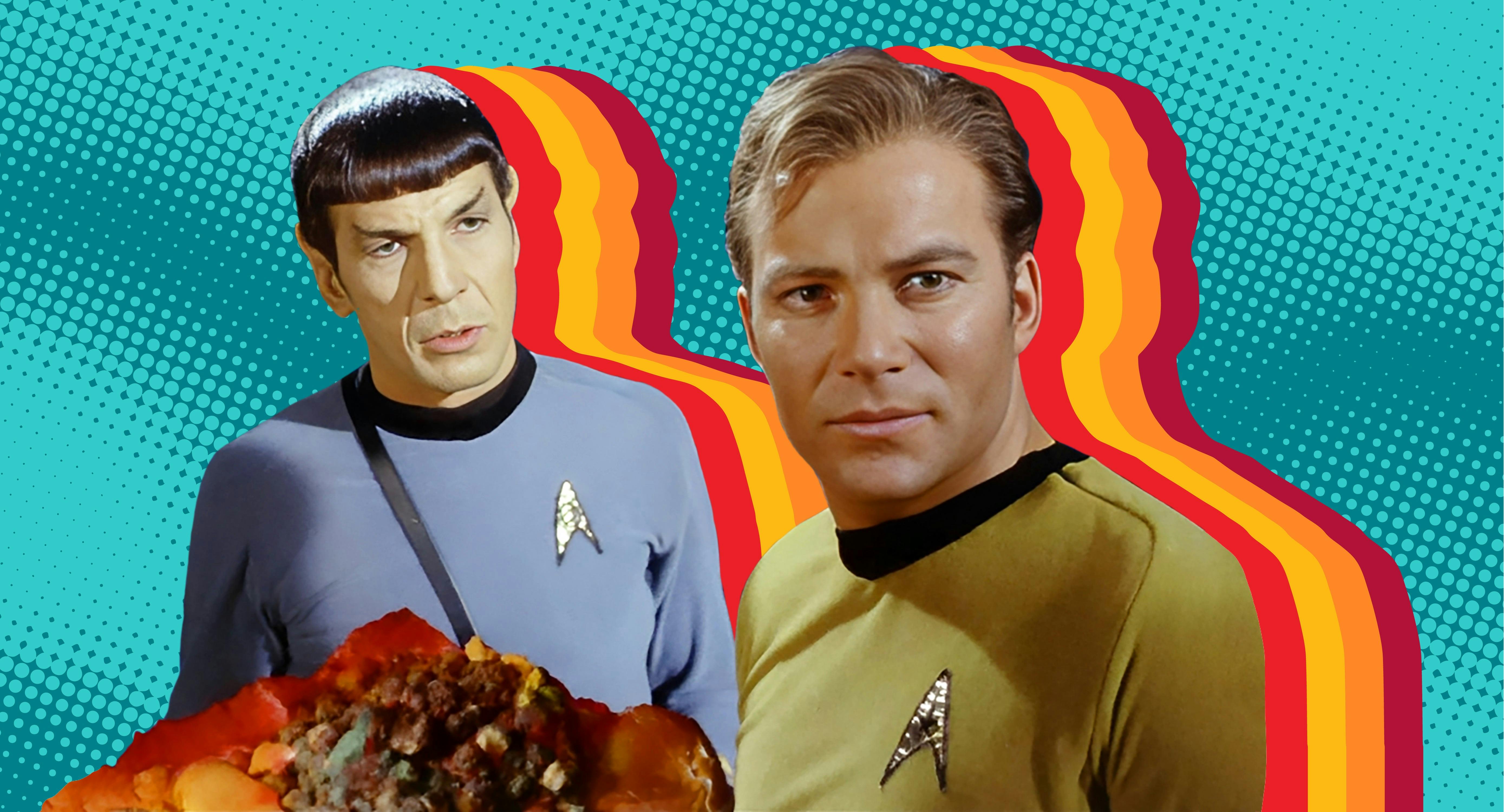
StarTrek.com / Rob DeHart
When “The Devil in the Dark” first premiered on March 9, 1967, it demonstrated why Star Trek was different from most other science fiction programs on television.
It was a monster story, to be certain, but instead of the monster being simplistically evil and being destroyed in the end, the Horta was instead an intelligent individual with understandable motivations and one which cooperation was possible. In that way, “The Devil in the Dark” is a quintessential Star Trek episode thematically.
Star Trek History: The Devil in the Dark
One of the most fascinating aspects of our research of the Gene Roddenberry Star Trek Collection at UCLA is learning the “what could have beens,” and discovering what the original ideas were for characters and episode in the early story proposals and drafts. For “The Devil in the Dark,” there are some fascinating differences between the episode’s original conception and its final form.

It was writer and producer Gene Coon who drafted the November 29, 1966, story outline that first charts the Enterprise crew’s experiences with the Horta. The episode that would eventually air begins with a miner named Schmitter attacked by something then unknown to the viewers.
It is a unique opening because it is the only one of The Original Series episodes to not feature at least one member of the Enterprise crew. Originally, according to the story outline, the episode was to open with a teaser set on the Enterprise, in which Scotty informs Kirk that the ship is in serious danger. There is a faulty “varanium plug in the antimatter accelerator” that will explode and the ship has no replacement.
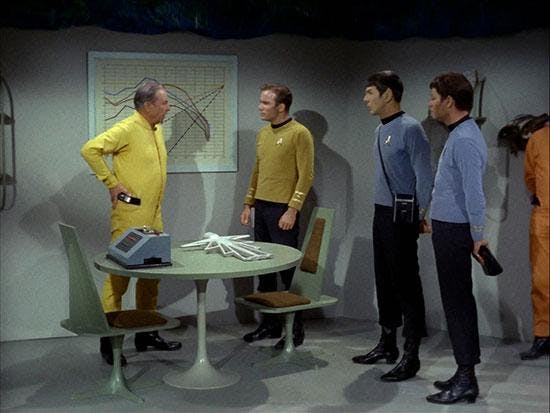
In subsequent story outlines, the name is changed to the more familiar “pergium.” The only nearby source is the mining colony of Thetis Six (again, later changed to Janus VI). Unfortunately, upon contacting the colony, Kirk learns from their leader Colton that the miners are being attacked by a creature. The name Colton will be changed to Vanderberg in the next story outline, dated December 5.
As originally designed, the first act includes Colton in his communication headquarters giving instructions and safety orders to his miners. One of the miners on guard duty is attacked by a creature described as “shadowy, obscure... but in a moment, the shaggy thing is gone, and there is only a blackened lump where the guard had been.”
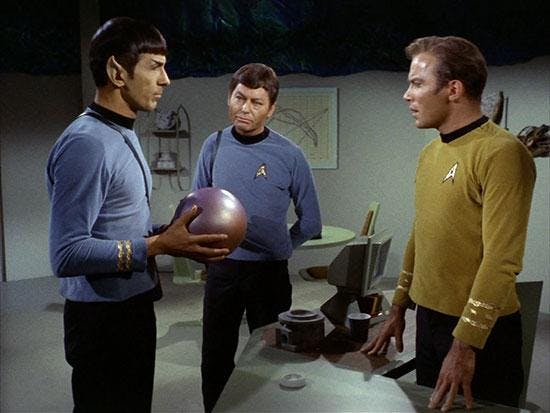
Interestingly, the outline has no scene where Spock picks up a silicon nodule (revealed to be Horta eggs) which inspires him in the aired episode to begin formulating some early ideas and theories. This is because that scene in the outline takes place not at the colony, but on board the Enterprise in the outline, with Kirk, Spock and McCoy meeting with Colton. In the early version of the story, the miners are not directly destroying and collecting what they think are nodules, rather the eggs are being destroyed by falling rocks disturbed by the mining.
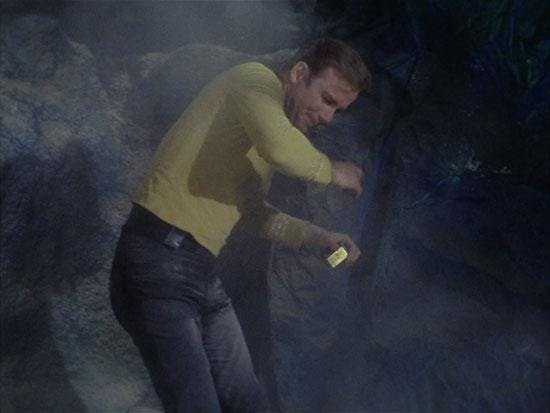
The Chamber of the Ages, where the eggs are stored, is referred to as the Room of Tomorrow. Another difference is that the Horta steals a transformer and not a main circulating pump.
The biggest difference between the original story outline and the final episode is that Spock does not use a mind-meld to communicate with the Horta. Instead, Kirk and Spock both use a device called a "transicator." Spock’s telepathic abilities allows him to focus the transicator more effectively.
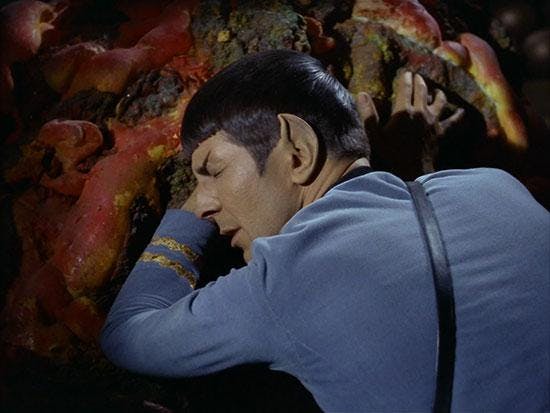
The line “Pain! Pain!” does not come from Spock, but rather the Horta itself through the transicator. In the December 5 outline, the mind-meld is a part of the story, with it being described as “a Vulcanian technique of empathy... extremely difficult, quite painful... and horribly embarrassing to such guarded creatures as the Vulcanian, since it entails a complete lowering of mental barriers, a complete mental exposure.”
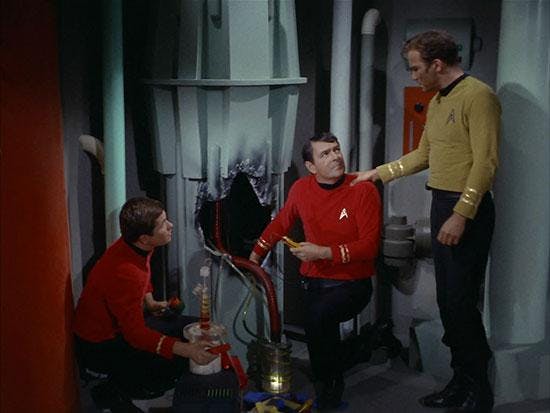
One of the great aspects of reading Coon’s original outlines is that it reinforces the important role he played in Star Trek’s history. Among his many contributions, it was in Gene Coon’s story outline for “The Devil in the Dark” that he invented one of Star Trek’s most enduring memes — the “I’m a doctor, not a...” line, which is first used in this episode. In fact, the story outline reveals the line typed by Coon to describe McCoy, “He is a doctor, not a bricklayer,” which would eventually be reformatted and used by the good doctor himself in the script as dialogue.
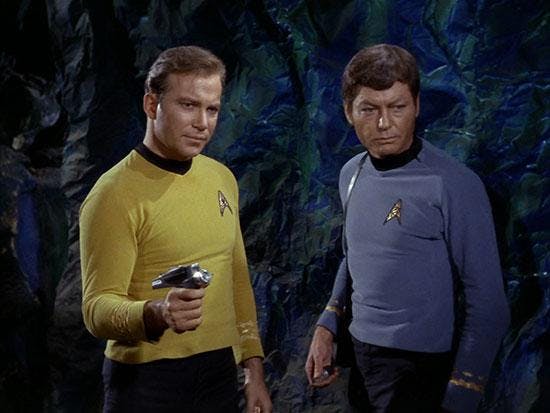
What is also revealing is that no matter which draft we researched, and no matter how specific details of the story changed, the main theme of understanding through communication was always there – something about Star Trek that always makes it special.
This article was originally published on March 9, 2019.
Maria Jose and John Tenuto are both sociology professors at the College of Lake County in Grayslake, Illinois, specializing in popular culture and subculture studies. The Tenutos have conducted extensive research on the history of Star Trek, and have presented at venues such as Creation Conventions and the St. Louis Science Center. They have written for the official Star Trek Magazine and their extensive collection of Star Trek items has been featured in SFX Magazine.
Stay tuned to StarTrek.com for more details! And be sure to follow @StarTrek on Facebook, Twitter, and Instagram.

